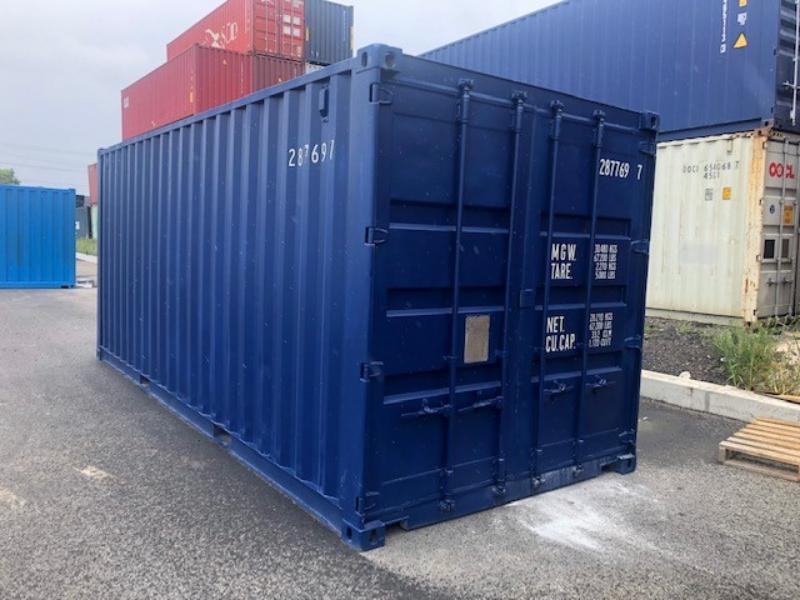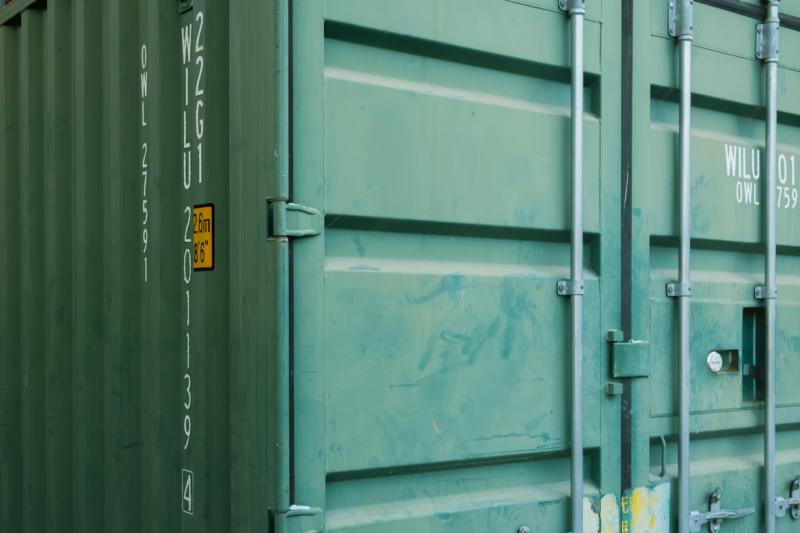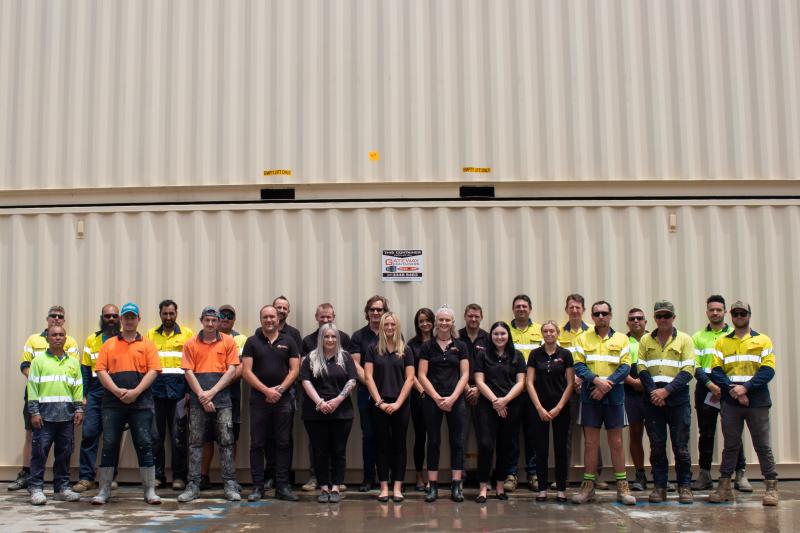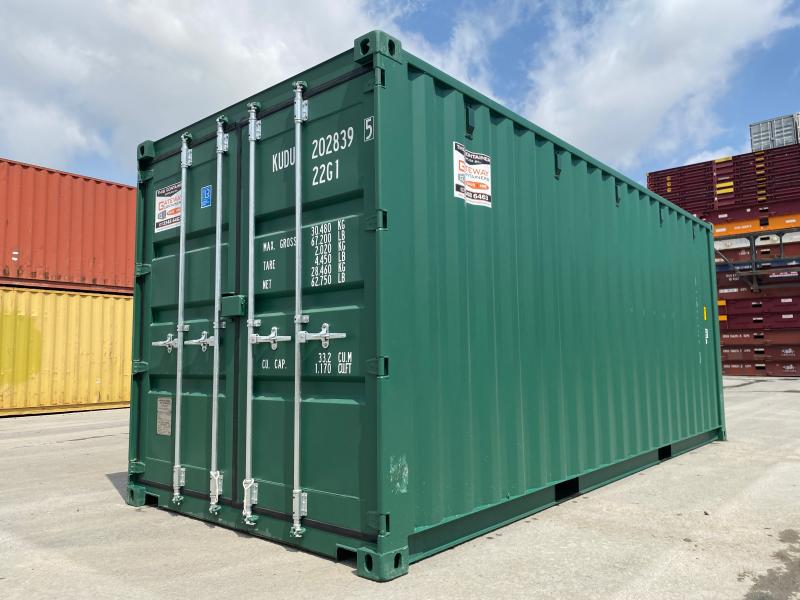Shipping containers are the ultimate in durability and efficiency, whether they’re used on land or at sea. They are generally constructed from steel, with galvanised steel fittings, floors that are treated to prevent rotting and paint that prevents corrosion. That said, as with anything that is battered, exposed to the elements and has day-to-day usage, it’s going to require semi-regular maintenance to keep it in top condition and ensure a long life.
The lifespan of a shipping container
Built to last, a shipping container might seem indestructible but even these can deteriorate without proper maintenance. A shipping container’s lifespan is not as long as a house, but the average lifespan of a container is upwards of 25 years so it’s still important to take care of them. An inspection and maintenance schedule should be carefully planned to ensure the container continues to provide its usefulness for many more years.
Why maintenance is important
Maintenance on a regular basis is important to the longevity of a shipping container for several reasons:
- To prevent damage to the contents
- To decrease the chances of costly repairs
- To prolong the life of a product, which will increase the value of the container and decrease its cost to maintain
- To increase the period of time the container is certified for transit
- To ensure you get the most bang for your buck
How to maintain a shipping container
There are some simple ways to make sure your experience as a container owner is one of the most hassle-free moments of your life. The excitement of working through the decision process to pick up your first cargo shipping container (from Gateway Containers of course!) through to avoiding expensive repairs is made even easier with experienced repairers. That’s why we’re diving into our wide range of experience to give you some of the best tips for maintaining your storage container.
Some of the most well-known ways to ensure a long service life and low repair costs of your shipping container are by using experienced repairers to carry out proper repairs and maintenance from time to time, and by purchasing your high-quality container from a company that uses proper methods of loading, transportation, and modifications. However, there are a few things you can do yourself to decrease repair requests.

Here are our maintenance tips to keeping your shipping container in top condition:
1. Protect your container from water
The first and most important part of the container to maintain is the roof of your shipping container. Second-hand containers are often dented when having other shipping containers stacked on top of them. Dents can collect rainwater which can cause leaks and corrosion. Ensure that all dents are repaired and areas are treated with rustproof paint to prevent corrosion.
Many shipping container websites erroneously suggest that because shipping containers are constructed from Cor-Ten steel that they are completely rustproof. This is not the case, Cor-Ten steel is preferable to other steel, and corrosion resistant, but not completely corrosion-proof.
The steel is sensitive to salt air environments and must be treated to ensure that it does not rust with specialist paint. Areas that have been dented, scratched or cut must be sealed, painted and rust proofed to ensure the long life of the container.
Shipping containers are well designed to avoid corrosion, water and dirt traps. Things get a little bit trickier after you cut them, join them, stack, them and modify them in various ways, shapes and forms. This is especially important if you have used shipping containers as the basis for a modified container building with doors, windows and other openings.
Check your container’s modified areas, especially around the joins or metal on metal areas to ensure that these are clean and free of corrosion. Take special care to look for depressions or other areas that may collect dirt, debris and water and clean them out. Remove any rust and treat the area with anti-corrosive paint.
One of the most important things you can do to ensure the long life of your shipping container is to install it on a level, well-drained surface. This stops water from collecting in one area of the container and prevents corrosion of the underside.
2. Pest proof your container
Check your containers for any area that could house pests. Check for any holes in the floor, gaps underneath doors, any rusting or holes in the walls, gaps around windows and any other places you are aware of which could be a potential entry point for spider webs, insects or mice. Seal these holes with a silicone sealant to ensure that pests cannot get inside. If you suspect any moisture damage, leaks or corrosion, repair this as soon as possible to prevent infestation.
3. Seal your doors and windows
Shipping containers are relatively simple, and only have a couple of moving parts in the door assemblies. As with anything with moving parts, they are subject to damage or wearing out with repeated use, and should be looked after to ensure they work correctly all the time. There are two important things to do when maintaining your shipping container doors and ensuring a good seal.
The first is to clean them, and the second is to lubricate them.
Remove all dirt, grit and rust from the door hinges and locking bars using a commercial grade cleaner. Lubricate the door hinges and locking bars to ensure that they work correctly. It’s easy to use a lubricating spray (such as WD-40) on oil for the hinges, while a good quality grease works well for the cams.
Shipping containers are also designed to be a completely sealed environment and utilise rubber gasket type seals on the doors and windows. These generally have a lifespan of around 10 years before they can perish and lose their ability to seal the door effectively. Keep these clean and replace them if they are cracked or worn out.

4. Check your modifications (Plumbing systems)
If your container is a refrigerated or reefer container it will require occasional servicing. Preventative maintenance will stop downtime and costly repairs from occurring when you least expect them. Generally, this sort of maintenance needs to be carried out by qualified technicians, such as those from Gateway Container Sales. We can carry out both mechanical and electrical troubleshooting on your reefer container as well as ensure that the interior is clean and at a food-grade standard, if required.
If you modified your container with running water for other reasons, spend some time on a regular basis making sure your plumbing is free of leaks. This includes checking all faucets, valves, pipes and any other plumbing system you have installed. If you were to check your plumbing as part of your annual maintenance, this will greatly reduce the chances of you suffering a costly water damage issue.
5. Check your modifications (Electrical systems)
Inspect your electrical system for loose connections, damaged wires, or faulty breakers. Check all sockets and lights to ensure they work properly. If you have any doubt about the working order of your electrical system, stop using it immediately and get a qualified electrician to check it over.
6. Keep it clean
Regularly clean your container as the enclosed environment can get mouldy. If you wish to resell your container in the future mould can be a deterrent. Find out more about keeping moisture out of shipping containers and preventing condensation.
Does your shipping container require expert attention?

Gateway Containers provide our clients with the best container solutions that are available. Our team of experts have a range of experience that will save you downtime and money. Contact our team today about your shipping container needs or get a free quote.




